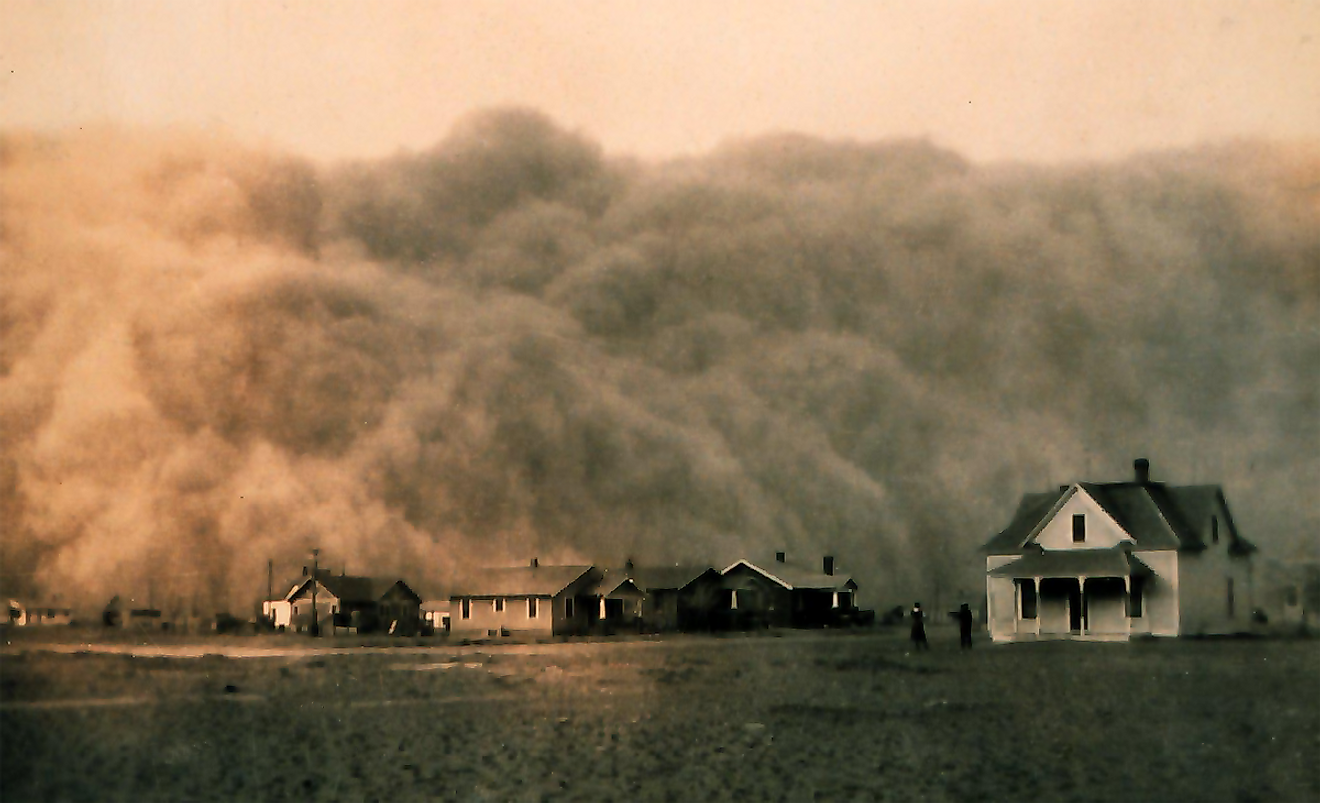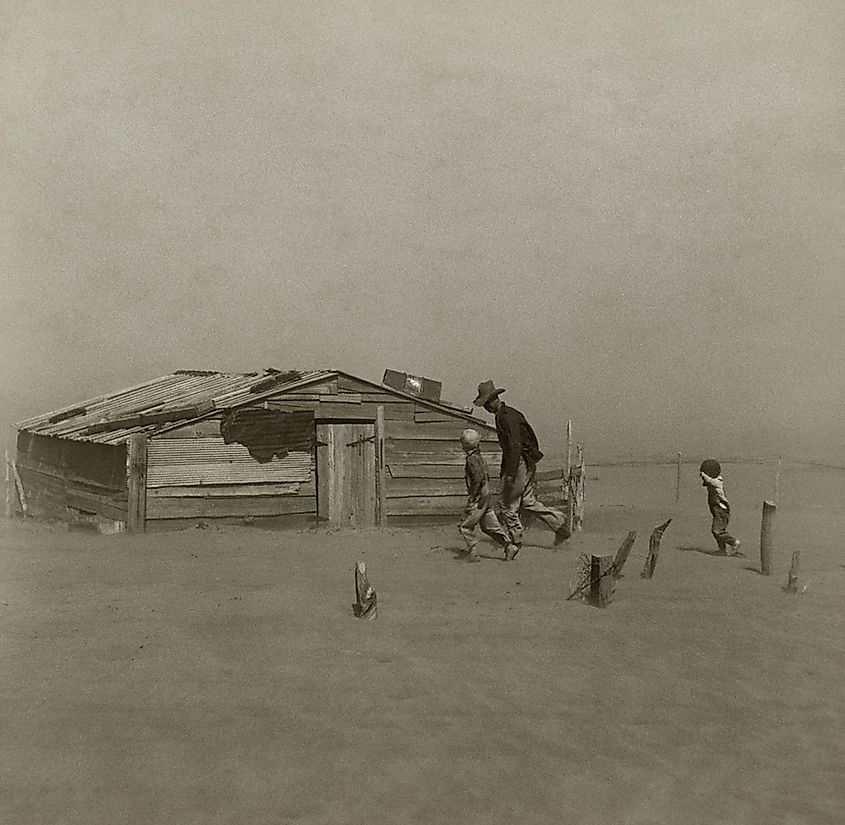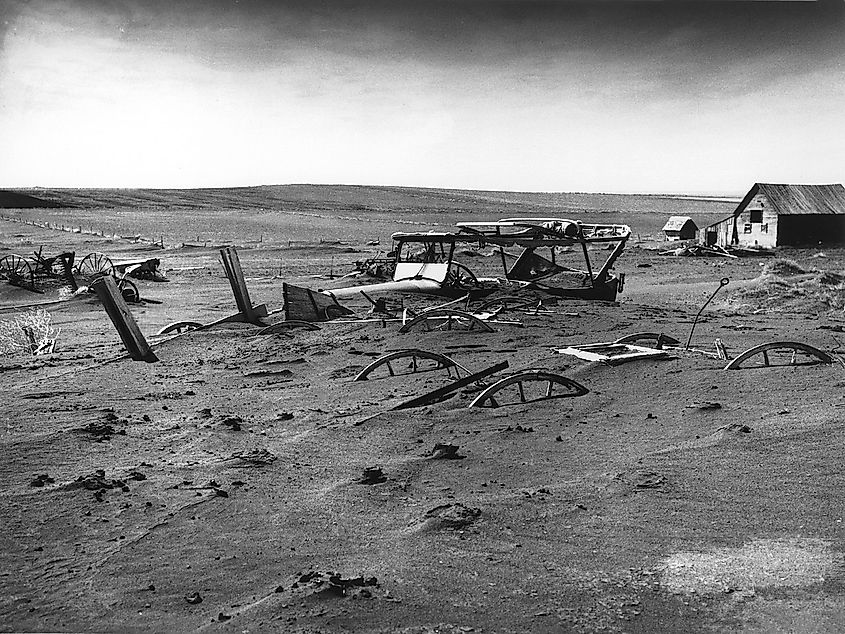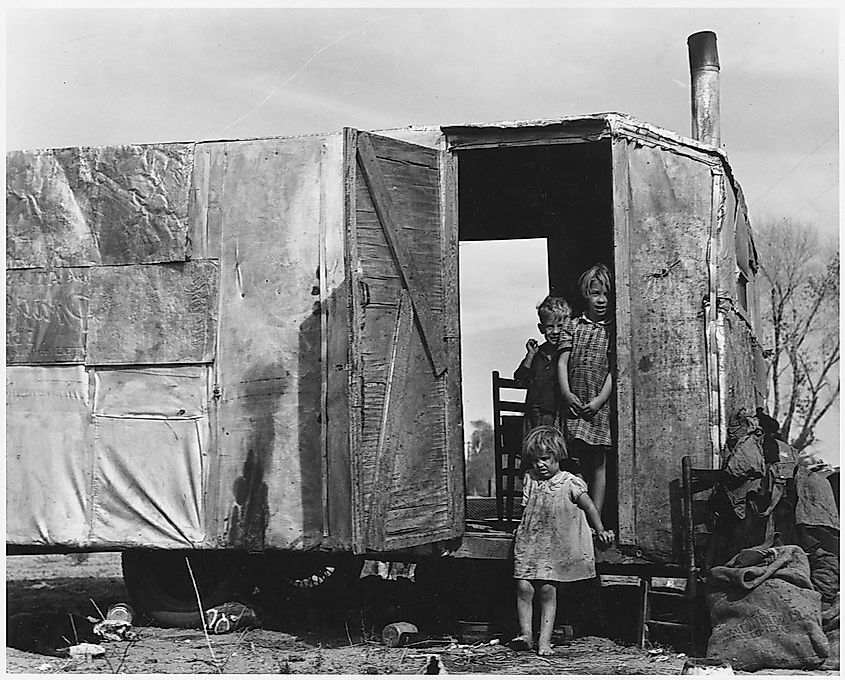What Was The Dust Bowl?

- From 1931 to 1939, around 75 percent of the U.S. was plagued by unusually high temperatures, the worst drought in 1,000 years, strong winds, and resulting clouds of dust.
- According to researchers, the year 1930 brought different weather patterns to the areas over the Atlantic and Pacific Oceans.
- Poor agricultural practices also led to wind erosion and drought.
- April 14, 1935 was named “Black Sunday,” after one of the worst dust storms that took place that day, hitting six states.
As American pioneers moved further west towards the end of the 19th century, they began settling in the southern and midwestern plains. Farming became a way of life for them, and many prospered. The good fortune was not to last for long though, as climate and farming methods changed, creating years of hardship.
From 1931 to 1939, around 75 percent of the U.S. was plagued by unusually high temperatures, the worst drought in 1,000 years, strong winds, and resulting clouds of dust. This natural disaster gave rise to the term “Dust Bowl.” Farming practices also contributed to the problems, and things were further complicated by the Great Depression, which took place from 1929 to 1933.
Causes

According to researchers, the year 1930 brought different weather patterns to the areas over the Atlantic and Pacific Oceans. This in turn made the Atlantic become warmer and the Pacific cooler. These changes affected the jet stream direction. The jet stream is an air current that transports moisture from the Gulf of Mexico up to the Great Plains, pouring rain into the Rockies. In 1930, this rain did not make it to the Great Plains. This weather pattern is also conducive to producing tornadoes.
Poor agricultural practices also led to wind erosion and drought. Starting in the 1920s, farmers were employing mechanized farming techniques to increase profits. From 1925 to 1930, over five million acres of unfarmed land were plowed; 1931 was a record year for crops. Unfortunately, the overproduction of wheat decimated the natural drought-resistant grasses and fertile topsoil, and left unused fields bare.
Some of the hottest temperatures ever recorded for these regions also occurred during this time. 1936 was the hottest summer ever, with a deadly heatwave that led to 5,000 fatalities. Tennessee, Arkansas, Kentucky, Indiana, Nebraska, Louisiana, Mississippi, and Missouri all had temperatures of 110 degrees or higher.
The Dust Storms

As the winds blew, they created gigantic dust clouds, which spewed dirt mounds onto everything, including livestock and homes. The dust also caused pneumonia in children. By 1932, there were 14 recorded dust storms (also called black blizzards), and 38 in 1933, plus many more to come. This increased the drought, because the dust particles reflected sunlight back into the air before it reached the ground. The land cooled, temperatures dropped, and the amount of evaporation plummeted. As a result, the clouds did not get the moisture needed to produce rain.
April 14, 1935 was named “Black Sunday,” after one of the worst dust storms that took place that day, hitting six states. Winds of 60 mph were recorded, and with all the dust, no light could penetrate, and people were caught outside not being able to see. An article in New Republic publication described what it was like: “We live with the dust, eat it, sleep with it, watch it strip us of possessions and the hope of possessions.” The next day, the phrase “Dust Bowl” was coined.
The Aftermath

A migratory family from Texas living in a trailer in an Arizona cotton field
The Dust Bowl caused farmers to lose their homes and livelihoods. Crop prices dropped significantly, and the federal government provided aid to these states in 1932. The following year, farmers slaughtered well over six million pigs to reduce supply and increase prices. This was during the Depression, when food was in short supply. The federal government enacted the Surplus Relief Corporation, which redirected excess farm output to help feed the poor. Congress also appropriated funds to help with drought relief.
By 1936, rural families in the Great Plains were receiving federal emergency relief. Many farming families relocated to California, but not all were successful in finding work. It is estimated that the government provided around $1 billion (1930s dollars) in relief during the Dust Bowl crisis.











